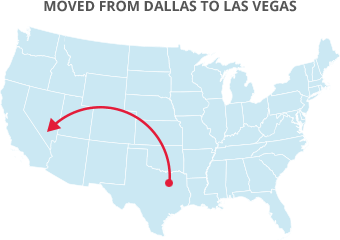

 There is something about a big pile of boxes and spools of packing tape that is refreshing—here's your chance to sort through all your things and carefully pack your prized possessions, so when you reach your new residence and begin unpacking the boxes it will seem just like your birthday when you were a kid. Fantasize for a minute that is how the entire sequence of events actually unfolds, and you are not scampering through the house like a loon mixing heirloom china in with the set of encyclopedias, be sure you purchase the correct packing supplies for your moving job.
There is something about a big pile of boxes and spools of packing tape that is refreshing—here's your chance to sort through all your things and carefully pack your prized possessions, so when you reach your new residence and begin unpacking the boxes it will seem just like your birthday when you were a kid. Fantasize for a minute that is how the entire sequence of events actually unfolds, and you are not scampering through the house like a loon mixing heirloom china in with the set of encyclopedias, be sure you purchase the correct packing supplies for your moving job.
Boxes and tape are a few of the most important components of packing, and all boxes and tape are NOT similar in quality. It's acceptable to throw random coffee mugs in an old microwave box and store it on a shelf in the pantry, but to pack, stack, and transport that box, it will fall down like a house of cards and you'll wind up with a bunch of broken crockery.
If you are packing packing your own stuff, do some research into the materials before you get started. If you are employing a moving company to do the actual moving, they will most likely have the right heavy-duty boxes, tape, and wrapping paper you will want to use. If not, storage facilities, big box stores, and the internet are acceptable sources to get your supplies, but since you cannot do tactile research online, do not depend on reviews to help you make up your mind—everyone packs differently and "sturdy" and "solid" are highly subjective terms.
Seek out boxes that are corrugated--a layer of wavy fiber between the inner and outer layers of heavy cardboard. The corrugation allows for structure and support, so when you stack them on the moving truck they don't collapse. There are different degrees of rigidity within the corrugated world, so you should get the box stability you require for a given item--go with the sturdiest boxes for the most fragile and the bulkiest things you'll pack.
While you're buying boxes, make sure and get plenty of the small ones--heavy belongings go in small boxes, bulky lightweight items go in the bigger boxes. For instance, books are relatively heavy and should go in a small box. Throws and throw pillows are comparatively lightweight and can be placed in the bigger ones.
Purchasing bargain, low quality tape is where many DIY packers get discouraged. If it's cheap, it will not adhere well. Worse, it will stick to itself when is comes out of the gun and splinter in tiny little pieces and then you have to pick at it for quite a while and try to get it to unstick in a single piece. Be extravagant and purchase a decent-quality tape gun or two with a padded handle—you will be overjoyed you did when you're eighty boxes in with a hundred more to tape. It is also a good idea to buy your tape in bulk--it costs less and you can generally return what you don't use.
 There are several options for padding around the inside of the boxes. Old towels and linens are wonderful when you need something lining the box, like when you're packing shoes and do not want them crashing around.
There are several options for padding around the inside of the boxes. Old towels and linens are wonderful when you need something lining the box, like when you're packing shoes and do not want them crashing around.
Newsprint is hands down the best option for almost everything--from packing mugs (thread a twisted end through the handle and put the other ends inside after it's wrapped) to books to kitchen items.
Bubble wrap can get pricey, but get the good stuff anyway, since those are the items that you will use it for. The bubble size fluctuates, but a good rule of thumb is for your bubble size to pair the item size—use the big bubbles for lining around the entire box. Touch the wrap before you purchase it, and see how strong it is when you squeeze and pull it. If it's weak or does not like the bubbles hold, try another brand.
If you have not moved for a while, and you go looking for boxes, prepare to be surprised at the options you have. When your parents moved, they probably bought their tape and boxes and had the whole neighborhood saving newspapers for a long time. Today, there are a lot of specialty moving supplies you will find when you go shopping—several are really worth the extra money, some are just reinventing the wheel—it is up to you to discern what's going to be best for you situation. Just remember, be sure you're buying good quality--you do not want your mattresses in cheap plastic sheeting.
Now that you've got the boxes under control, make a plan for how you are going to get the big stuff out the door--the furniture, the lawn mower, the grill--but do not be anxious, help is right around the corner. For some of these items renting equipment is the easiest way to go.
Your furniture is more fragile than you might realize--surface dents and scratches are entirely too common when things come off the truck. You can sidestep these with some key protection; again, be sure you're getting acceptable quality materials that hold up to a lot of wear and tear.
The last items you will need are for the really heavy and bulky stuff. Unless you happen to have these items already, it would be best.
Whatever method you are moving your residence, your local moving company will be able to help you with all of the supplies you will require to move. Just remember that you are putting your whole life in these boxes, so take care that your moving supplies are sufficient for the job.

